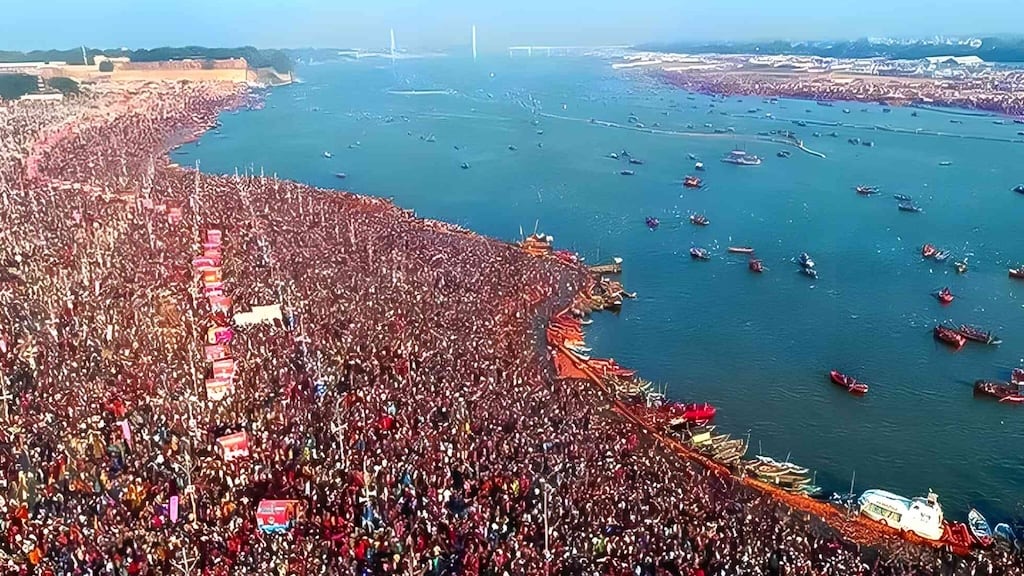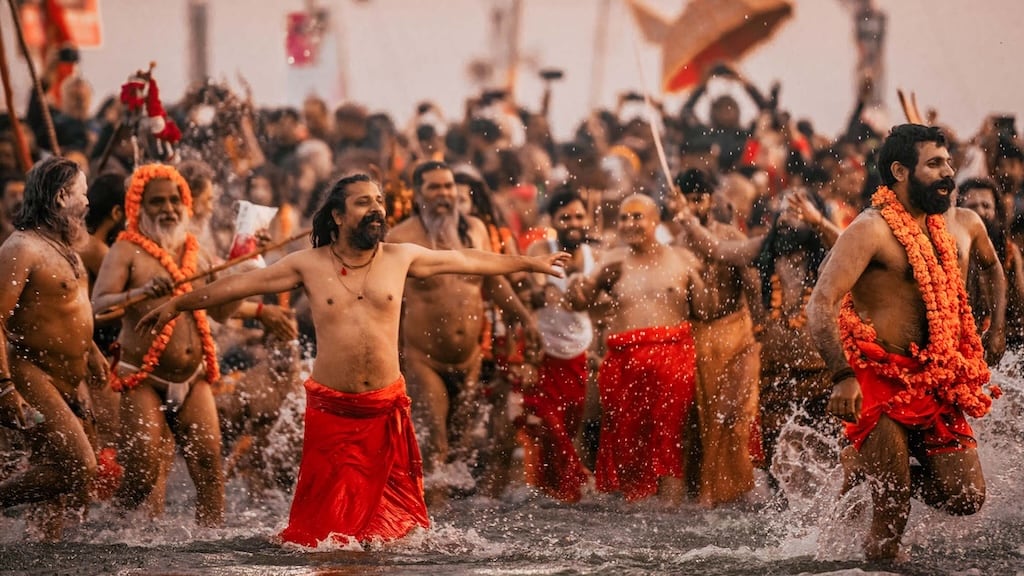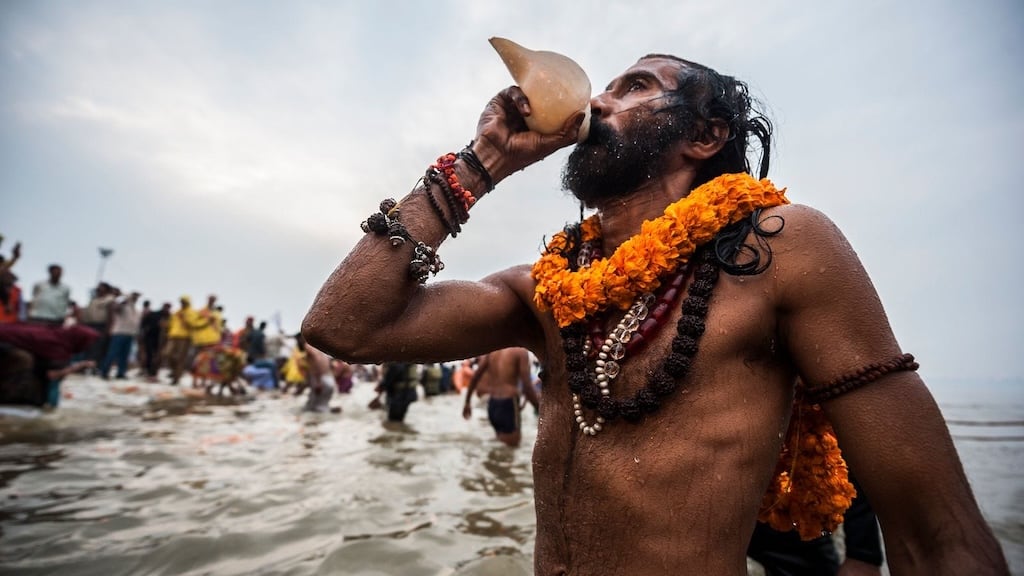The Great Confluence of Faith
The Maha Kumbh Mela in India is the world's largest religious congregation, celebrated at the sacred confluence of the Ganga, Yamuna, and the mythical Sarasvati rivers in Prayagraj.
The 2025 edition, spanning from 13 January to 26 February, attracted hundreds of millions of pilgrims, transforming the riverbanks into a grand spiritual city. For official information, consult kumbh.gov.in.


Historical Background
The Maha Kumbh Mela traces its origins to the Hindu legend of Samudra Manthan, when drops of the nectar of immortality fell at four earthly sites: Prayagraj, Haridwar, Ujjain, and Nashik. Among them, Prayagraj is revered as Tirtha-raj, or “king of pilgrimages,” for its Triveni Sangam, believed to cleanse sins and grant liberation. References to mass bathing in Prayag appear in ancient scriptures like the Rigveda and Puranas.
The festival rotates among the four locations, but the Maha Kumbh Mela in Prayagraj every 12 years is its grandest form. Over centuries, it evolved with support from kings, saints, and governments, growing into a landmark of spiritual devotion and temporary urban planning.
Typical Activities
Top activities during Maha Kumbh Mela include ritual bathing (snan) at the Triveni Sangam, especially on auspicious Shahi Snan days. In 2025, millions gathered on Makar Sankranti (14 Jan), Mauni Amavasya (29 Jan), and Maha Shivaratri (26 Feb). Akharas led colorful Peshwai processions featuring naga sadhus, music, elephants, and horses.
Beyond bathing, visitors experience spiritual discourses, yoga workshops, devotional music, cultural performances, and community meals (bhandaras). Markets brim with religious icons, rudraksha beads, and saffron attire, while boat rides at dawn offer breathtaking views of the confluence.
Traditional Customs
Traditional customs in India shine at the mela: pilgrims take vows before bathing, offer prayers to the rivers, and light floating lamps at dusk. Akhara camps uphold distinct Shaiva and Vaishnava traditions, while naga sadhus embody renunciation and draw immense curiosity.
Devotees adopt satvik diets, practice kalpavas by the river, and engage in bhajans, kirtans, and yagnas. Attire often includes saffron robes, white dhotis, and colorful turbans.


What to Expect
Visitors to the Maha Kumbh Mela in India should prepare for huge crowds, cold mornings, and long walks.
- Best time: Early morning at the ghats; avoid peak hours unless you seek the thrill of Shahi Snan.
- Weather: January–February brings foggy mornings and mild afternoons—pack layers.
- Stay: Choices range from simple tents and dharamshalas to luxury camps and city hotels.
- Transport: Prayagraj is accessible by air, rail, and road, with special trains and buses during the mela.
- Health & safety: Use official bathing zones, stay hydrated, and respect local customs.
Nearby attractions include Allahabad Fort, Anand Bhavan, Khusro Bagh, and day trips to Varanasi.
Conclusion
The Maha Kumbh Mela is more than a festival—it's a living testament to India's spiritual heritage and cultural vitality.
From the sacred dip to the mesmerizing aarti, it offers an unforgettable experience of devotion and unity. Plan your visit through the official Kumbh portal and witness history at the confluence.